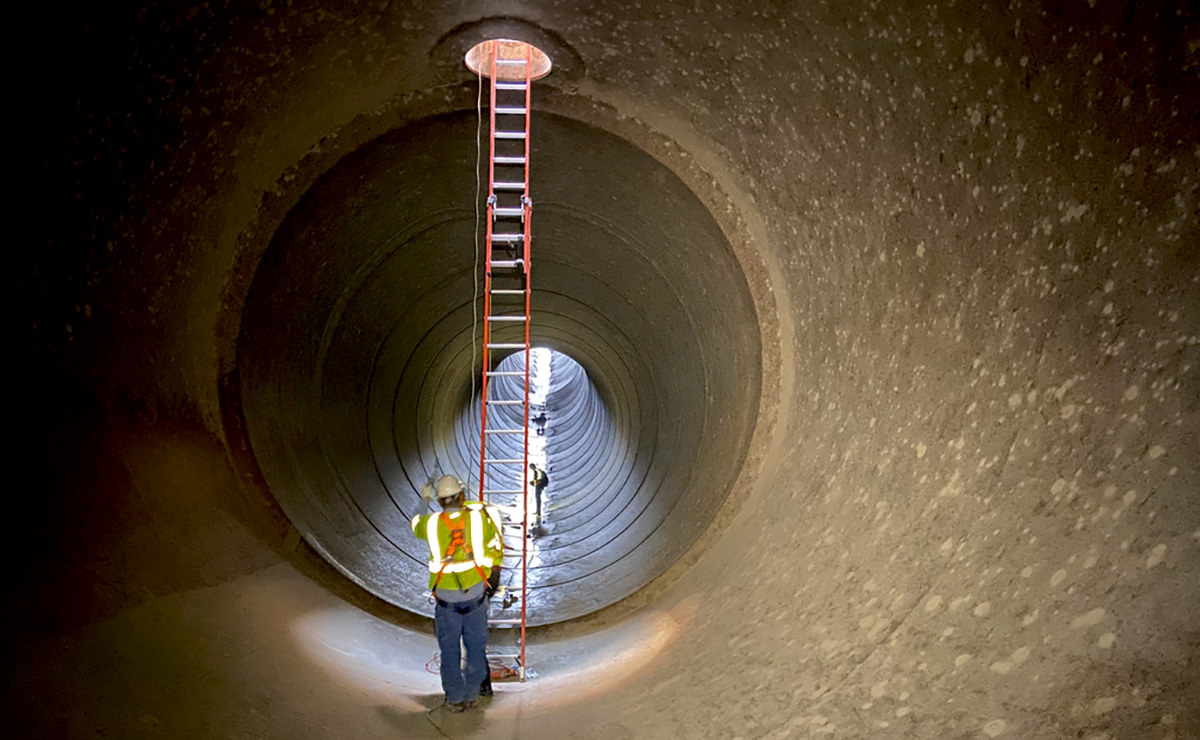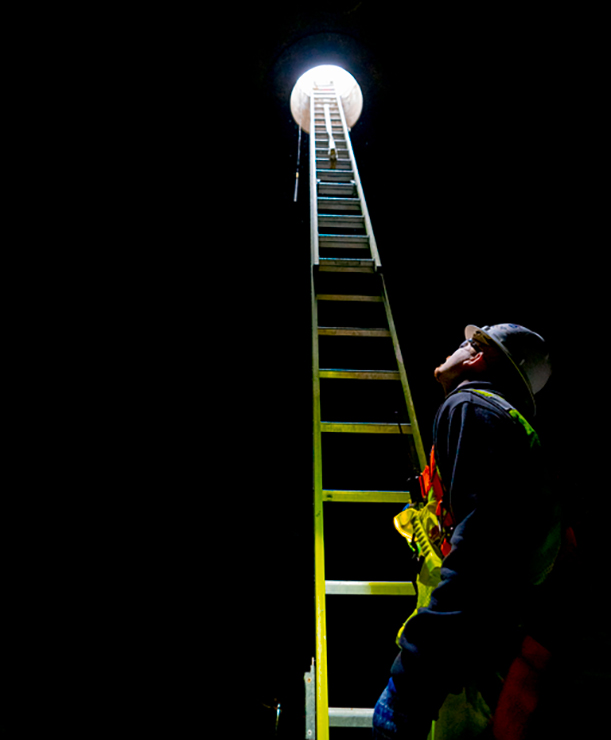A few months ago, we answered the question: how does the water cross the road? The answer was simple: Through an inverted siphon.
An inverted siphon is an underground pipeline that carries water underneath an obstacle like a riverbed or road. But what material is used to construct a siphon? When referring to CAP’s ten largest siphons, there isn’t one answer, there are three — cast-in-place concrete, steel and prestressed concrete – and each have different maintenance needs and challenges.
Cast-in-place concrete (also known as monolithic-concrete) siphons are constructed in an excavated trench using a specially constructed form to create the shape of the pipe and support the reinforcing cages. This material is often considered the best choice for large diameter pipelines, such as CAP’s inverted siphons. Why? Because overall, cast-in-place concrete pipe requires a lower amount of maintenance than the others, experiences less wear, and is very reliable. CAP has five siphons of this material.
Steel siphons are strong but like any steel pipeline are susceptible to corrosion. Thus, they are lined to protect the steel, which in the case of CAP’s large diameter pipes, is expensive to maintain. The estimated 100-year maintenance cost on one of CAP’s steel siphons is over $200 million and requires multiple outages to fully repair. There are two steel inverted siphons in CAP’s system, the Agua Fria River Siphon and the Salt River Siphon.
Prestressed concrete cylinder pipe, also known as PCCP, utilizes a steel cylinder embedded in a concrete core that is wrapped with high strength prestressing wires, which provide extra strength to the concrete. CAP actually has three prestressed concrete siphons that do not have a steel cylinder due to their relatively low operating pressures. A quick fact, CAP has the largest prestressed concrete pipes in the world — the Centennial Wash Siphon, the Jackrabbit Wash Siphon and the Hassayampa River Siphon are all 21’ in diameter.


In addition to the ten primary inverted siphons, there are nine additional inverted siphons in the CAP system that are fairly short, relatively speaking. They located throughout the Tucson area and are constructed from double barrel reinforced concrete box culverts that are either, 10’x10’ or 8½’x8½’, depending on their location.
No matter the size, length or material type, inverted siphons are another critical, and hidden, component that helps ensure the reliability of the CAP system.
KRA: Project Reliability
Providing reliable and cost-effective operations, maintenance, and replacement of CAP infrastructure and technology assets



